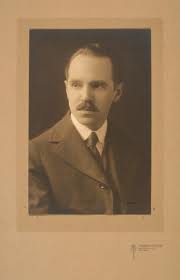
20th Century, Solo with Orchestra, Works
A gifted and eclectic composer, Griffes was born in western New York in 1884 and died prematurely in 1920 at the age of 35. Although he studied with German pianists and composers, he was most influenced by early 20th-century French and Russian composers, and by oriental music.
He was also interested in Native American music, incorporating it into his compositions. His Poem is a fantasy for solo flute, 2 horns, harp, strings and percussion, with clear impressionist influences. Its alternating tranquil and rhythmically driven sequences and bold tonalities make it a compelling piece for audiences – and a perennial favorite for flutists.

20th Century, Suite, Works
Benjamin Franklin, one of our country’s founding fathers, was well-known as a statesman, diplomat, writer, printer, scientist and inventor – but a composer, too? Franklin’s interest in music is well-known. He printed treatises on music, played several instruments (including violin, harp, viola da gamba and guitar), and designed a four-sided music stand for string quartet players. He even invented the glass harmonica – an instrument made of rotating tuned glass bowls played by holding wet fingers against the edges, for which Mozart and Beethoven wrote compositions!
In 1946, a manuscript of a 5-movement string quartet was uncovered in the Bibliothèque Nationale in Paris, bearing the title “Quartetto a 3 Violini Con Violoncello Del Sigre Benjamin Francklin.” It was originally (and unusually) scored for 3 violins and ‘cello to be played in “scordatura” fashion – all on open strings, with specific string tunings indicated for each instrument!
The quartet was published and attracted immediate attention from musicians and scholars, including Alan Shulman, an American composer and ‘cellist (1915-2002). Mr. Shulman, a pre-eminent ‘cellist and member of the NBC Symphony Orchestra under Arturo Toscanini, used excerpts from the Franklin quartet in his score for the NBC radio series “American Portraits” in 1950. In 1963, he created the present Suite based on thematic material from the quartet, maintaining its original key and structure. One of its notable performances was by the Philadelphia Orchestra during the 1976 Bicentennial.

20th Century, Works
Copland composed Lincoln Portrait for narrator and orchestra in 1942. It was part of a series of musical portraits of great Americans commissioned by André Kostelanetz shortly after American entry into World War II.
In Copland’s own words: “The composition is roughly divided into three sections. In the opening section I wanted to suggest something of the mysterious sense of fatality that surrounds Lincoln’s personality. Also, near the end of that section, something of his gentleness and simplicity of spirit. The quick middle section briefly sketches in the background of the times he lived in. This merges into the concluding section where my sole purpose was to draw a simple but impressive frame about the words of Lincoln himself.”
Copland used excerpts from a few contemporary songs, including “Camptown Races,” to evoke the spirit of mid 19th-century America. The moving words read by the narrator are taken from Lincoln’s letters, speeches and the Gettysburg Address.
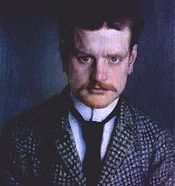
20th Century, Concerto, Works
Born in 1865, Jean Sibelius grew to be considered a national hero in his native Finland. A Romantic Nationalist, Sibelius even had his picture on the $100 Mark for a time.
Sibelius’s rise to fame came as Finland was fighting for independence against Lenin and the Soviet Union. “Finlandia,” one of Sibelius’s most famous works, was written during this period and at one point was considered the Finnish national anthem.
As a boy, Sibelius had dreams of becoming a famous virtuoso violinist. However, he started his training as a lawyer at the University of Helsinki. His love for music eventually got the best of him, and he transferred to what is now the Sibelius Academy of Music, which at the time was called the Helsinki School of Music.
Widely known as a symphonist, Sibelius wrote seven symphonies and had agreed to write an eighth, which was scheduled for a premiere but never came to fruition.
Sibelius’s Violin Concerto (the only concerto he wrote) is symphonic in scope and is marked by melancholy melodies and dark harmonies. Sibelius uses the violin as part of the texture while displaying the instrument’s virtuosic qualities and giving the orchestra equal importance.
Though Sibelius was himself a violinist, he composed only one violin concerto. This music did not come easily, perhaps because he was so close to the instrument.
The violin concerto was premiered in Helsinki in February 8th, 1904 and was considered a disaster. This was partially Sibelius’ fault as he didn’t finish the piece until the last minute and therefore didn’t give the soloist enough time to learn it.
After the first performance, Sibelius revised the work extensively to the version we know today. It was given a second “premeire” in Berlin, conducted by Richard Strauss, and was received very well. After this performance it was played a few more times, but slipped into obscurity until 1991 when the Sibelius estate allowed one performance and one recording to be published. Since that time it has become a mainstay in the violin repertoire.
By 1903, Sibelius had already composed his first two symphonies and a series of overtly nationalistic works: the Karelia Suite; the choral “Kullervo” symphony; the four Lemminkäinen legends; and the famous tone-poem Finlandia. All of these bore the hallmarks of late Romanticism; but his style was about to undergo a marked change.
By the time of the Third Symphony (1907), his music had become harder-edged, condensed, and rigorously organized. The Violin Concerto thus stands at a turning point in Sibelius’s output. Janus-like, it looks two ways at once: back towards the expressive romanticism of his earlier years, and forwards toward the concise, rugged, highly concentrated music of his future. Both of these elements can be heard in this work, which remains one of the pinnacles of the violin concerto repertoire.
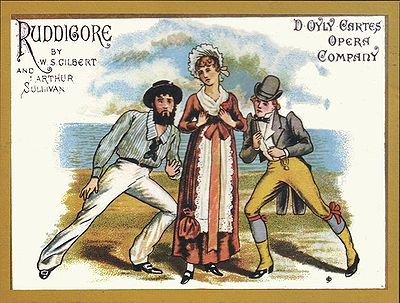
20th Century, Solo Vocal, Works
This song is taken from the Gilbert and Sullivan operetta Ruddigore, or the Witch’s Curse. This delightful operetta features (among other things) a roomful of portraits of ghostly noble ancestors – who actually step out of their picture frames and come to life! The song that follows – “When the night wind howls” – is sung by the lead ghost (Sir Roderic Murgatroyd). It describes ghostly revels amidst the graveyard “at midnight – “the dead of the night’s high noon.”
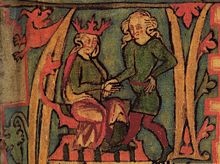
20th Century, Occasional Piece, Works
Sir Peter Maxwell Davies (called “Max” by many of his friends) has long been one of Britain’s most respected composers. He was born in Manchester, England, and studied music at the University of Manchester and the Royal School of Music. After further study in the United States and Australia he returned to England where he created a virtuoso chamber group called The Fires of London to perform works by himself and his colleagues. For a time they were the rage in avant garde musical circles.
But Maxwell Davies was drawn increasingly to write music that was not only modern but that was communicative and accessible. You will see this reflected in his composition An Orkney Wedding, with Sunrise.
Composer’s Note:
“An Orkney Wedding was written for the Boston Pops Orchestra as a commission for its centenary, and conducted at the first performance by John Williams. It is a picture postcard record of an actual wedding I attended on Hoy in Orkney.
At the outset, we hear the guests arriving, out of extremely bad weather, at the hall. This is followed by the processional, where the guests are solemnly received by the bride and bridegroom, and presented with their first glass of whisky. The band tunes up, and we get on with the dancing proper. This becomes ever wilder, as all concerned feel the results of the whisky, until the lead fiddle can hardly hold the band together any more.
We leave the hall into the cold night with echoes of the processional music in our ears, and as we walk home across the island, the sun rises, over Caithness, to a glorious down. The sun is represented by the highland bagpipes, in full traditional splendor.”
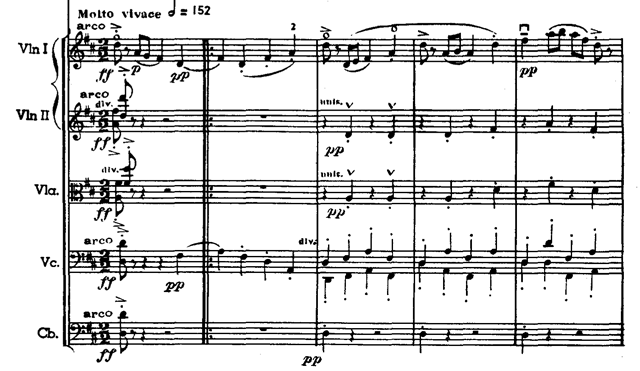
20th Century, Symphony, Works
By the time Prokofiev wrote his first symphony, he was already well-known as a child prodigy and the enfant terrible of twentieth century Russian composition. His pugnacious rhythms, violent melodic gymnastics and experiments with multi-tonality had already become recognizable trademarks (Stravinsky once said his music had ‘personality’, whatever its supposed aesthetic failings), and audiences had come to expect these elements of conflict in his music.
However, staying in 1917 in the Russian countryside (he was exempt from military service as the only son of a widow), he became interested in writing a work completely away from the piano. As a renowned virtuoso, the piano was his usual compositional tool, but by working without its aid, he hoped that the orchestra would sound more natural. The result was his first symphony: his one foray into Neo-classicism, it harks back to the symphonies of Haydn and Mozart in its reduced instrumentation and formal plan, although maintaining the biting wit (or is it sarcasm?) that is so much a part of his natural expression.
The work opens with a light, airy, exhilarating first movement, with gravity-defying leaps in the second subject. Later he expands on this high string register when the theme of the second movements floats in on stratospheric violins. Prokofiev replaces the typical third movement minuet of Haydn and Mozart with an even older dance, the gavotte, classically partnered with a droning musette; he was later to incorporate this movement into his Romeo and Juliet suite. The joyous finale is full of inventive counterpoint and bursting with irrepressible energy.
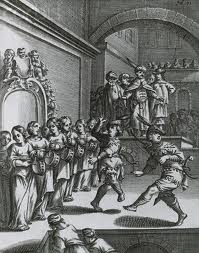
20th Century, Suite, Works
Fauré was commissioned to write the music for this suite by Prince Albert I of Monaco in 1919 as accompaniment to a choreographic divertissement. This “staged entertainment” was inspired by a Paul Verlaine poem and premiered in Monte Carlo.
In 1920, Fauré arranged the music as a four-movement suite. It consists of a Mozartian overture; a menuet and gavotte in faintly baroque style, and a final pastorale.
Of interest from a composition point of view is that the first three movements were, essentially, orchestrations of earlier works that Fauré had composed for piano some 50 years earlier. The dreamlike, wistful pastorale was composed in 1919, just 5 years before his death.
20th Century, Concerto, Works
No notes available.
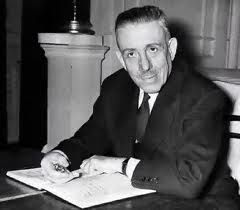
20th Century, Symphony, Works
French composer Francis Poulenc (1899-1963) almost defies characterization in terms of musical style. He was a member of the famed composer group known as “Les Six” and played a prominent role in 20th-century music.
He wrote many well-known works for the stage (Les Mamelles de Tiresias, Les Biches, Dialogues of the Carmelites), as well as numerous chamber works and concertos.
His Sinfonietta is one of his few large-scale orchestral works. It was commissioned in 1947 for the BBC, and premiered the following year. While Poulenc originally conceived of it as a short, 15-minute work (hence the title), it blossomed into a more substantial four-movement symphony, full of vigor, beauty and wit, with equal prominence given throughout to strings, woodwinds and brass.
The first movement begins with a serious and dramatic minor-key opening, with subsequent rising motifs passed around the orchestra. There is an unusual slow interlude in the middle of the movement in which solo winds are prominently featured, and a calming major-key ending.
The second movement is a lighthearted scherzo, with three witty themes introduced by the strings. The Andante cntabile features winds and strings in melodies written by Poulenc in late-Romantic, almost Brahmsian, style. The Finale is a romp, with an abrupt introduction, several incisive and witty themes, and a surprise ending.









